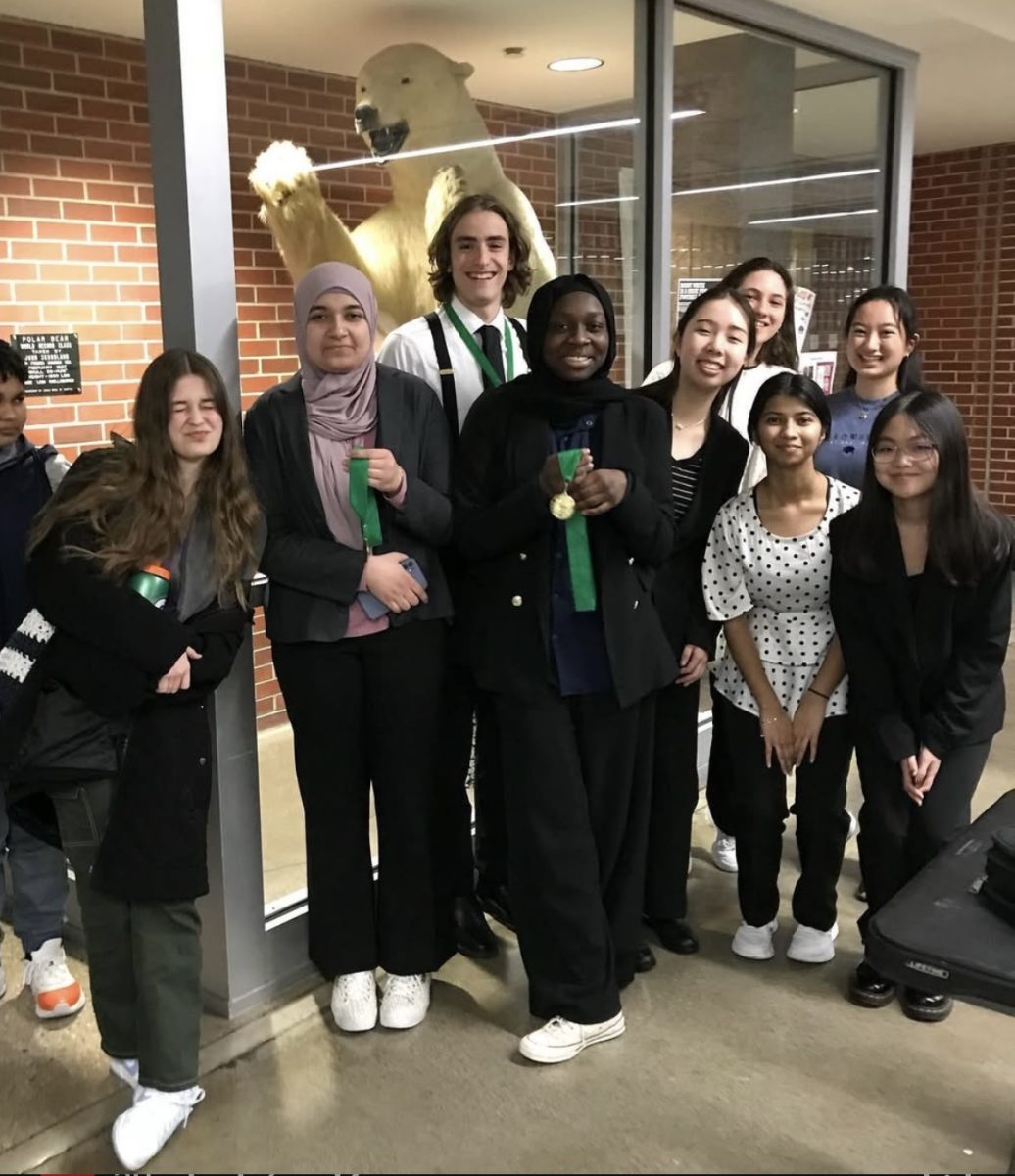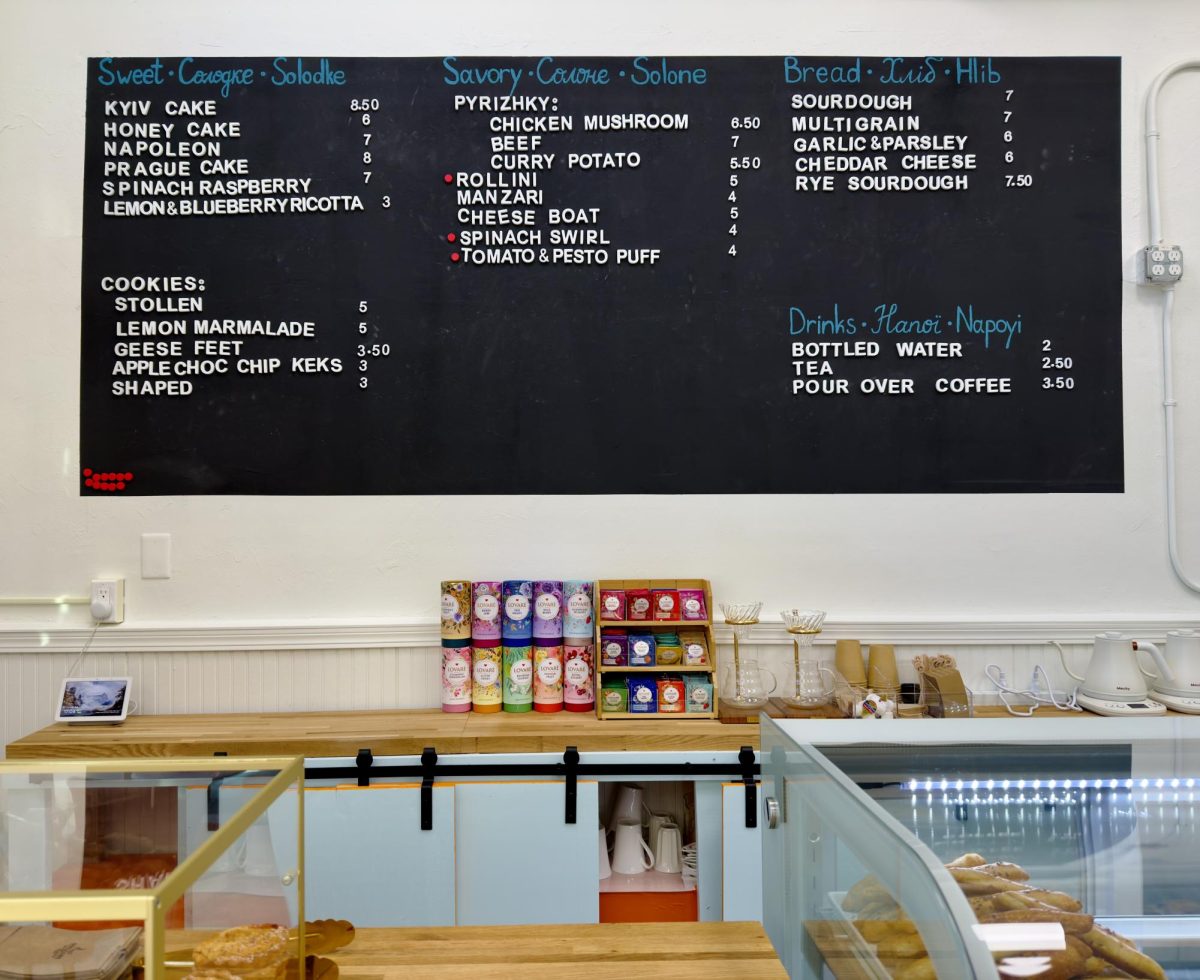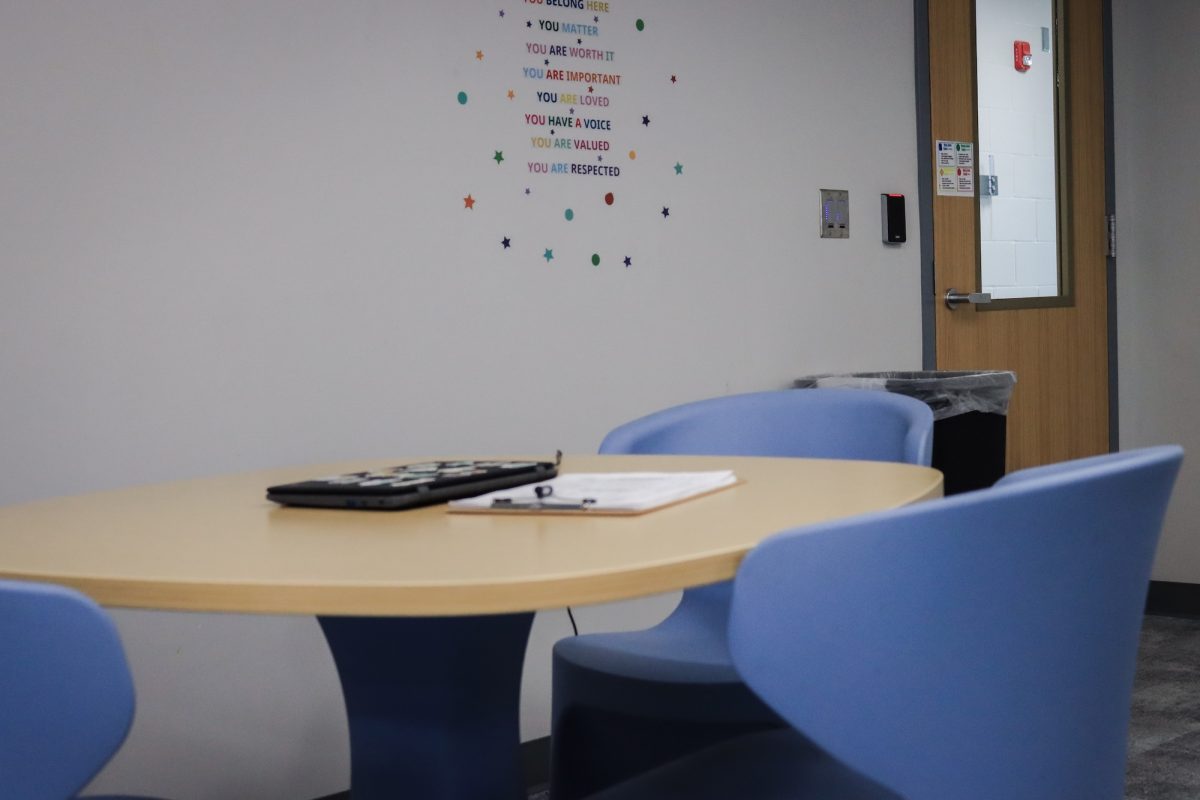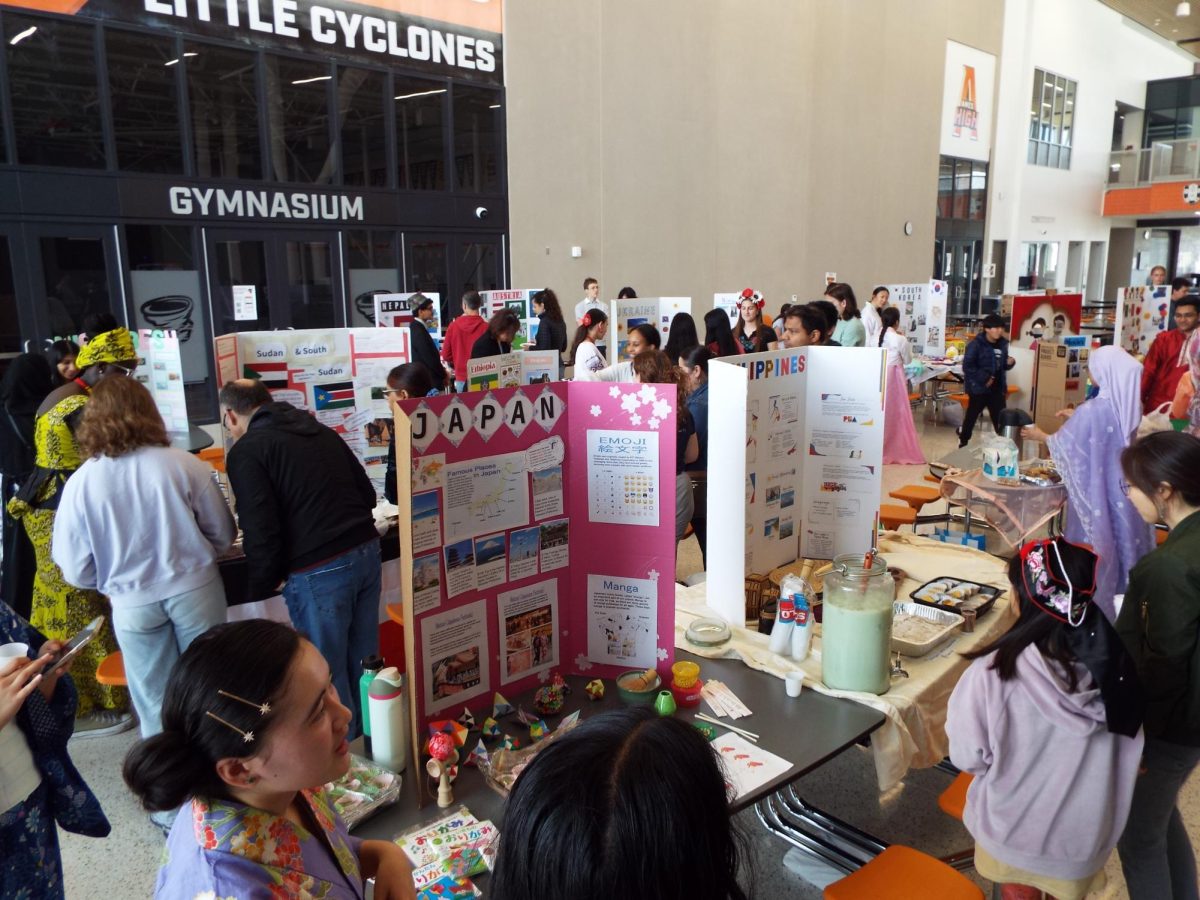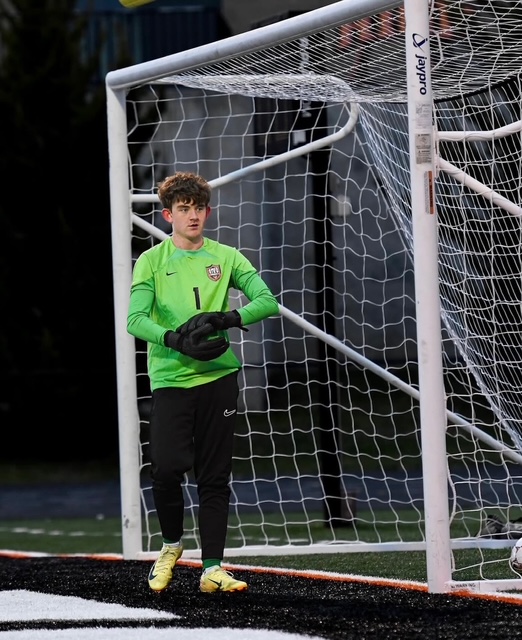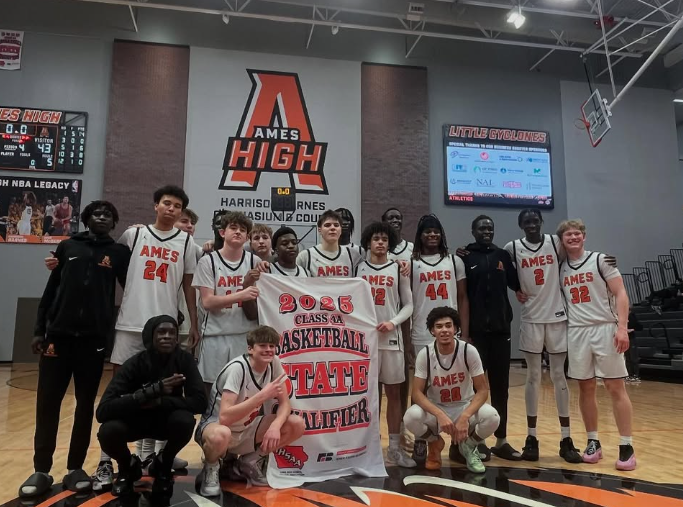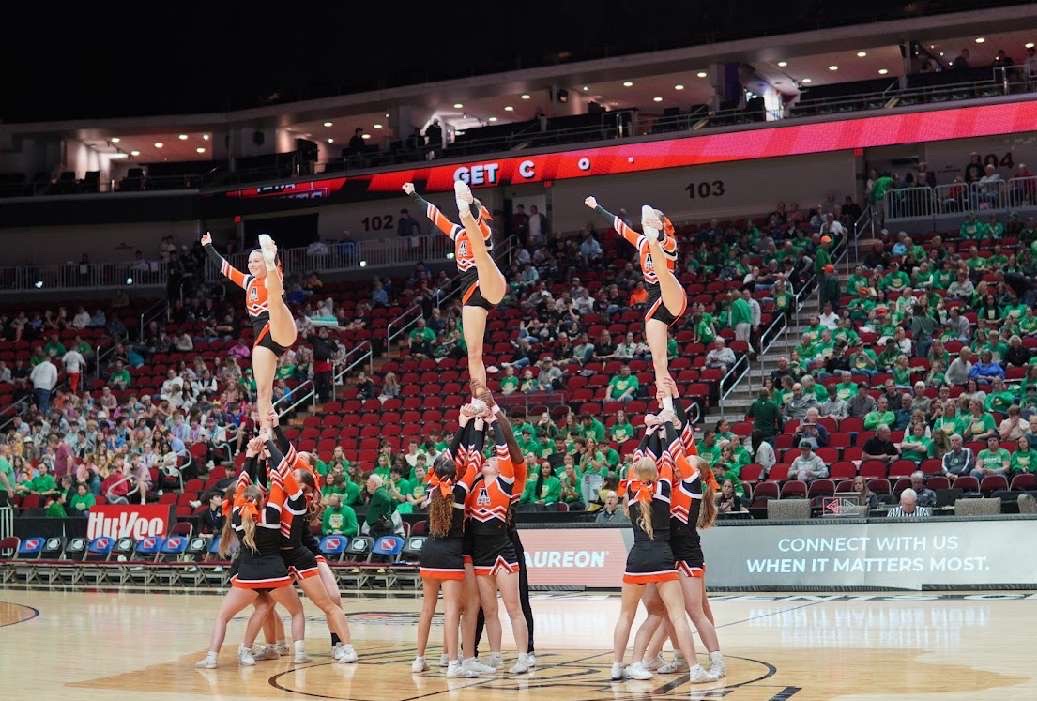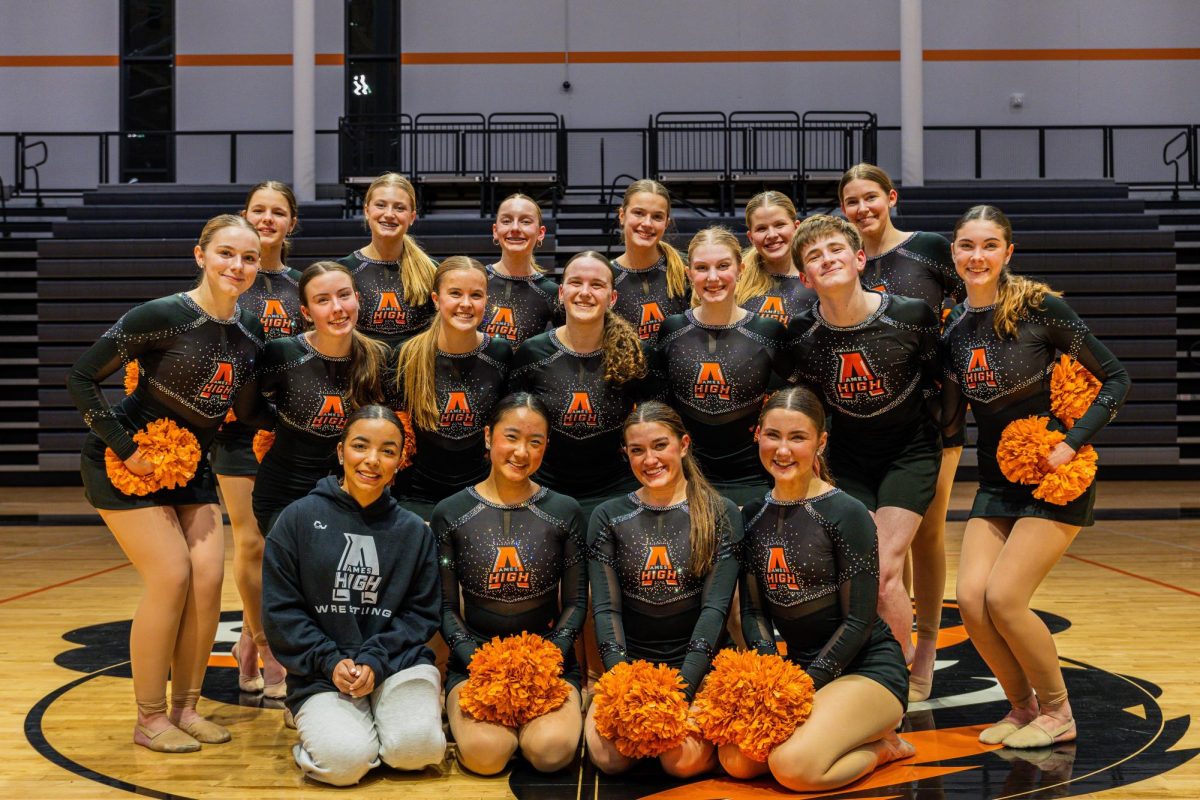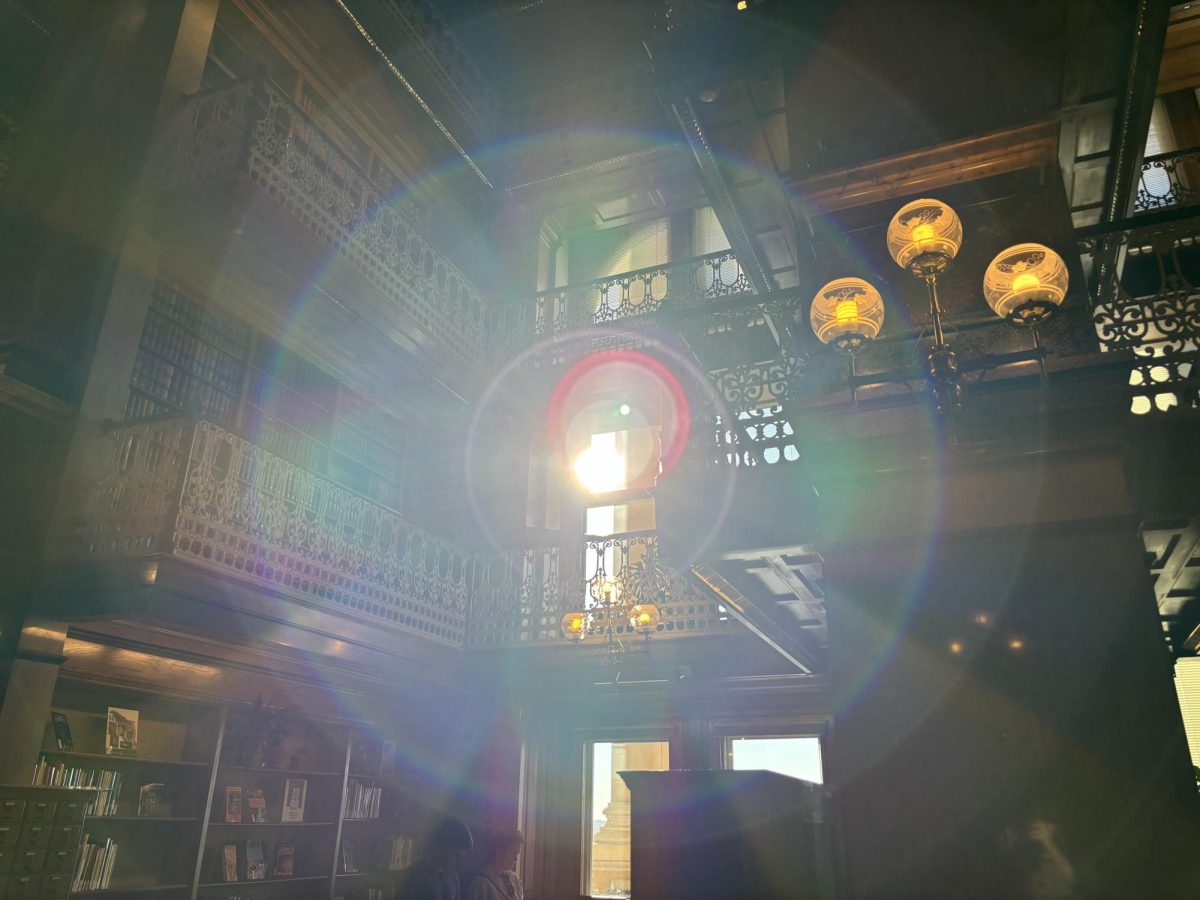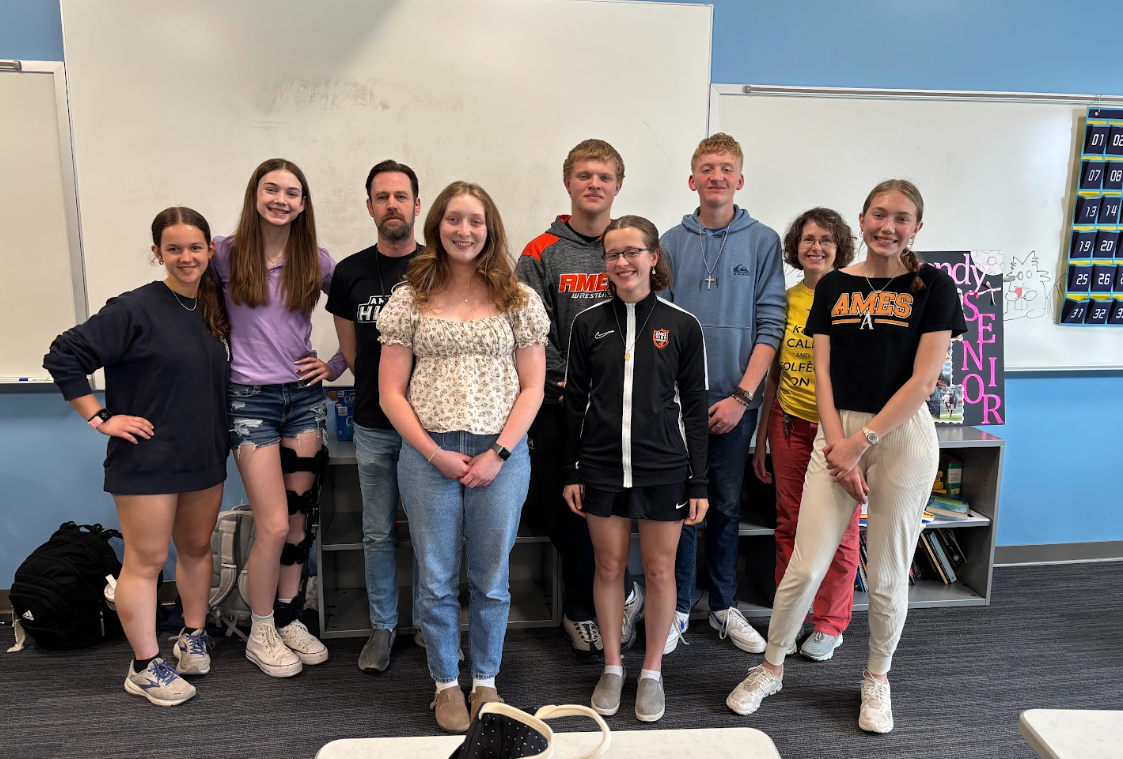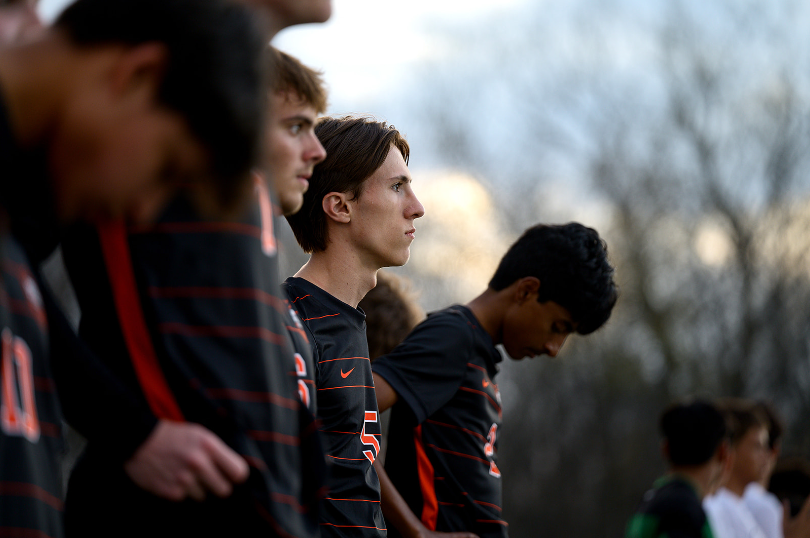In November of 2023 the school board voted nearly unanimously to allow the Ames Multipurpose Educational Services (AMES) Center, formerly home to the Beloit Campus of the Lutheran Services of Iowa program, to undergo nearly $9 million in renovations. Since its opening in early January, however, the AMES Center has been shrouded in mystery and little information has been divulged about the Center and its purposes. This has led to misconceptions about the Center itself, particularly with respect to the Center’s therapeutic classrooms.
“I’ve heard people say, ‘Oh, I’ve heard of the AMES Center. That’s where all the ‘bad’ kids go,’ and I really want to push back on that because that’s not what it is,” said Matt Smith, the AMES Center administrator. The AMES Center has three therapeutic classrooms. The Center has one elementary classroom for students in third through sixth grade, and two additional classrooms for students in seventh through twelfth grade. At the moment the therapeutic classrooms serve 11 students and have held at most 13 students this year. The classrooms themselves are designed to hold seven students each, for a maximum capacity of 21 students. However, capacity can vary dramatically depending on the level of need demonstrated by each student within the program. For example, if the classrooms aim to help students with extremely high levels of need, the maximum capacity could be as little as three. The therapeutic classrooms are intended for students who struggle with a traditional comprehensive school environment and only serve students who have Individualized Education Programs (IEPs). Through a referral process schools lay out what they have tried with students and what specifically has been successful and unsuccessful. This report is submitted to the district’s Director of Special Education, Deanie Thomas, who recommends whether or not the AMES Center would be the best place for the student, or if other strategies need to be attempted within the comprehensive school setting. Students are only enrolled in the AMES Center with parental approval. Deanie Thomas did not respond to a request for comment from The Web. The main difference between classes at the AMES Center and specialized classes within comprehensive schools, is that the classes at the AMES Center are part of a secluded environment with individualized adult support.
“They’re in a smaller environment with fewer peers to work on the skills that they need to be successful, and they have a lot of adult support,” Smith said. The therapeutic classrooms aim to return students to their comprehensive school with the skills required to succeed in that environment. The AMES Center is not intended as something long-term, but rather as a temporary respite for students who find themselves unable to learn within their traditional comprehensive school environment.
“If a student is being recommended to be here then what’s happened in their comprehensive school is just not working for them, and that’s not anybody’s fault. There’s not any blame to lay out there- it’s just not working,” Smith said. Most students in the program at the moment are in the therapeutic classrooms between six to nine weeks, although because the therapeutic classrooms are intended to meet students where they are at, students can stay within the program from as short as four weeks to as long as three years. Three years, however, would be an extreme example. Despite its benefits, concerns about the AMES Center and the role it would play in student discipline arose when the school board chose to allocate funds toward its renovation. Brett Becker, the only member of the school board who chose to vote against the implementation of the AMES Center in 2023, cited fears that the AMES Center would act as a negative, “pressure release valve.” Becker worried that the AMES Center would act as a band-aid solution that momentarily addressed tension but did not treat the heart of student behavioral issues.
“In terms of student discipline, I wanted to see the pressure released primarily through things like referrals to in-house guidance counselors and mental health counselors, or in severe discipline cases, through in-school suspensions, rather than removal from the building to a convenient alternative learning center,” Becker said. Becker’s apprehension was founded on the basis that students of color and those with disabilities are disciplined disproportionately compared to their white and able-bodied counterparts. While Becker recognized the potential benefits of the AMES Center in a statement made to The Web in September, he was also quick to add that students who have been treated unfairly needed to be looked after.
“The only way to properly release the tension in our inequitable system is to aggressively confront our own ongoing biases rather than sweep them out of sight,” Becker said. Smith acknowledges Becker’s concern in seeing the AMES Center as a potential safety valve, but notes the referral processes that have been put in place between schools and the AMES Center.
“[For] any student that comes here, we always work with the parents to determine if this is the best place for them to be. I feel very confident in saying that, if you were to talk to the parents of the students that are attending the AMES Center, they would say this is the best environment for them right now,” Smith said.
For some students and parents, the program has been a positive experience. “I wanted to thank you and everyone at the AMES Center for helping [student’s name]. We appreciate everything you all have done to help improve his life. I’m sure he will miss everyone there,” a parent of a student who spent time at the AMES Center said. At the moment three students have transitioned from the AMES Center back to their original schools, and two are in the process of transitioning. From the students who have transitioned, there has been a decrease in the behaviors for which they were originally referred to the Center.
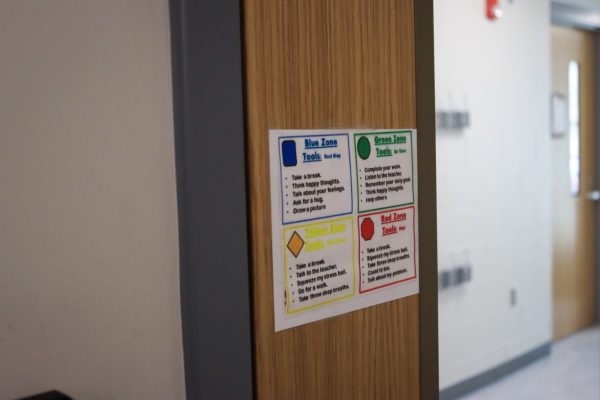
“There’s something about this environment that is working for them,” Smith said. Smith hopes to place a broader emphasis on supporting students after they return to their comprehensive school, particularly in terms of following up with students. Smith says he has had various conversations with older students about their futures. The smaller environment within the AMES Center has helped some older students discover paths after graduation that they can begin pursuing even in their comprehensive school, such as trade school or DMACC classes. Smith said he believes that the AMES Center serves as a middle ground for students who are not receiving the attention they require in their larger classes at their comprehensive school, and that this attention allows them to develop new skills.
“This is not a place for bad kids. This is not an exile. This is just simply a program where we can help kids develop skills to be successful,” Smith said.
Homeschool Assistane Program (HSAP)
Therapeutic classrooms are only one part of the AMES Center. Additionally, the Center provides support for homeschool students, features professional development areas, and houses one of the district’s Helping Other People Eat (HOPE) pantries. Homeschool Assistance Program (HSAP) For the Homeschool Assistance Program (HSAP), the space provided by the AMES Center has been instrumental. “It’s hard to put into words,” Kathy Geis, the coordinator of HSAP, said. Up until this year HSAP has been responsible for finding their own space to support homeschooled students and their parents. Prior to moving to the AMES Center, HSAP had been hosting their services in the empty Sunday School wings of churches they would rent out on weekdays but had not advocated for a more permanent space. Geis was surprised that the district was offering HSAP the space.
“I didn’t even know that they were thinking of giving our program the space,” Geis said. Having a permanent space has allowed HSAP to purchase more materials and has eliminated a burden for teachers. “Having a space for our classes is huge. It means that our teachers don’t have to carry everything back home and bring it back every time we have class, which they have done for years, because now we have storage space to keep our supplies. It’s wonderful to have a space like this- it’s the first time we’ve had a secure space where the doors are locked,” Geis continued.
At the moment HSAP serves a little over 340 students and has 15 homeschool teachers within its program. The teachers are required by law to meet with the students they supervise four times per quarter face-to-face in order to ensure that students are meeting state standards. The student’s education, however, remains set by the parent, and there is no required curriculum. “What we do have to see is progress,” Geis said. Students, for example, are not required to achieve at their grade level, although it is ideal. HSAP is one of many avenues that parents can take when choosing to homeschool their children. Some choose not to use HSAP at all, although a majority of families in Ames do. HSAP, particularly with its newly acquired space in the AMES Center, provides an opportunity for homeschooled students to have an opportunity to interact socially with other students their age- an experience they typically lack.
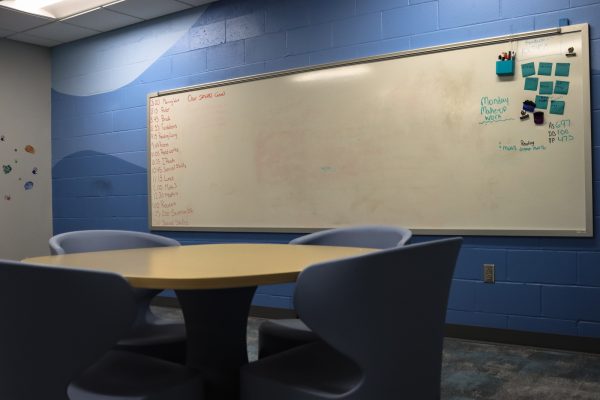
With an art classroom, library, community area, and field trips, HSAP allows homeschooled students to enjoy the amenities typically offered in traditional school settings. Classes taken at the AMES Center as part of HSAP are not considered dual enrollment but are rather opportunities to further enrich the student’s education. “I believe, what our families find most helpful are partnering with a supervising teacher, is just having another adult to bounce ideas off of and say, ‘Hey, this isn’t working, do you have any other ideas,’” Geis said. HSAP has big plans for what they will continue to do with the space provided by the AMES Center. Geis hopes that the gym behind the AMES Center, which will be shared with the Boys and Girls Club, can be used to offer P.E. classes and host homeschool student clubs in the future.
Helping Other People Eat (HOPE) Pantry
The AMES Center also houses one of the HOPE pantries, which provides access to food for families in need who are part of the Ames Community School District. Families or individual students fill out a Google form request for food on the district website, which is then sent to family advocates who arrange when and where food boxes can be picked up. Food boxes can be requested twice a month and typically include a balance of fruits, vegetables, starches, and proteins. However, supplies, which are donated by the Food Bank of Iowa, are typically inconsistent and can make it difficult to include all food groups. Additionally, families are also given a resource guide that lists other programs they can seek support from during times of need. HOPE pantries are currently stationed at different elementary schools around Ames. The AMES Center, due to its location at the Center of town, has made it easier for family advocates to provide food to families. Jacque Burkhart, a family advocate at Ames High, used to take two hours to pack and deliver a food box to an elementary school with a HOPE pantry station that was across town. Now, she is able to deliver food boxes in less than half of that time due to the AMES Center’s proximity to the high school.
“Now I can just zip over there- it’s super handy,” Burkhart said. The HOPE pantry location within the AMES Center also provides a more discreet drop-off and pick-up procedure for families who use the service. “No one has to see who’s coming and getting food because there aren’t a bunch of kids over there,” Burkhart added.
In recent months the district has seen an increase in those requesting food boxes. In November the HOPE pantry at Edward Elementary served 111 people from Edwards and the high school, compared to 23 people in October. Rising prices, first due to inflation that lingered long after the end of the pandemic, and now due to newly implemented tariffs, have manifested in the unsustainability of what was once considered a basic lifestyle. “Everything’s more expensive. Everything costs more. And it doesn’t seem like the increase in salaries is keeping up with the increasing cost of living,” Burkhart said. “If [this continues] every year…people are never going to get ahead. They’re always going to get farther and farther behind and never be able to do better.”

